If you own an e-commerce website or are interested in online sales, you must grow your e-commerce business. This post provides a lot of information. These statistics alone are proof. You need to beef up your e-commerce website.
In this post, I will help you understand the online consumer shopping trends based on my research and the most prominent companies in the e-commerce space.
In addition, I explain the tools they use and provide tips on how to strengthen your e-commerce web business. It’s a lot of information, but I think it’s worth looking over!
We’re concerned about the economy’s potential direction, especially with tariffs, but there is no need to panic. Instead, take action and continue improving your website. I hope this post helps you!
The article is about a 13-minute read. I have placed a directory below so you can scan topics that may interest you.
Directory
Description list: (tap the numbered item to go down to the subject title)
- Changing Consumer Habits
- The COVID-19 pandemic was a huge boon for online shopping websites
- Fourth quarter U.S. E-Commerce Retail Sales
- What about Amazon
- Top 10 Shopping Websites Used By US Shoppers for Second-Hand Product Search
- What are shoppers buying online?
- Market share of leading retail e-commerce companies in the United States as of October 2024 – 2025
- United States: retail e-commerce projected revenue for 2017-2025
- Mobile commerce sales as a percentage of total retail sales in the United States from 2018 to 2025
- U.S. online retail sales will hit $1.07 trillion in 2022
- What does all this mean for you and me?
- What are you doing to grow your e-commerce business in this market?
- 10 Tips to keep your E-Commerce Website Humming Along
- Winding down
Understand Online Sales and the Changing Consumer Habits
The paradigm shift…
How we adapt and how things change. I’m sure you remember (the 2020-2021 years of the COVID pandemic) that many stores placed online pickup counters up front. And the addition of outside pickup areas. Best Buy probably mastered the curbside pickup. And all the major chains have in-store pickup now.
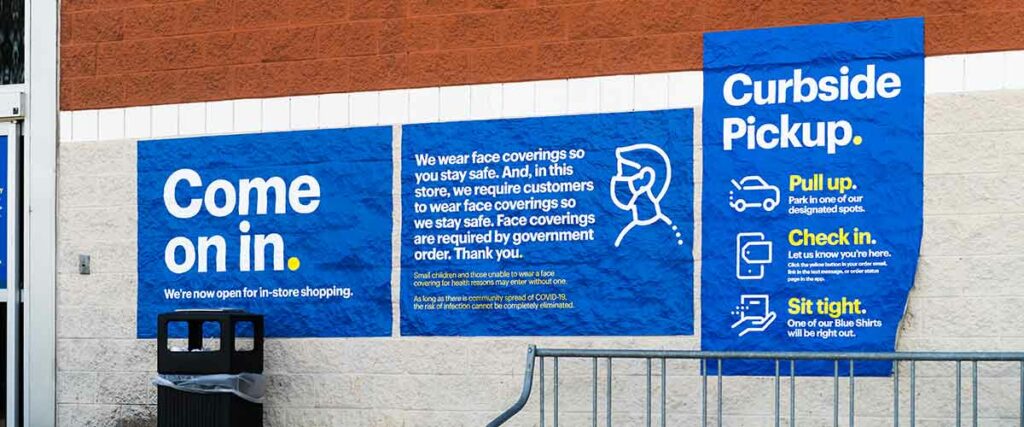
The COVID-19 Pandemic was a Huge Boon for Online Shopping Websites
Why 2021 was a boom for online sales–
- Most Americans were on lockdown, not as restrictive as China’s situation, but still scary enough to keep people home.
- The people who could work from home gained both free time and personal savings.
- There was a significant shift in consumer spending from services to goods for these housebound shoppers.
- The financial stimulus payments reached three-quarters of American households from Uncle Sam.
The pandemic fundamentally altered consumer habits in ways that persist today—large retailers must adapt their strategies to these enduring behavioral changes.
Looking to grow your online sales?
Fourth quarter 2024 U.S. E-Commerce Retail Sales
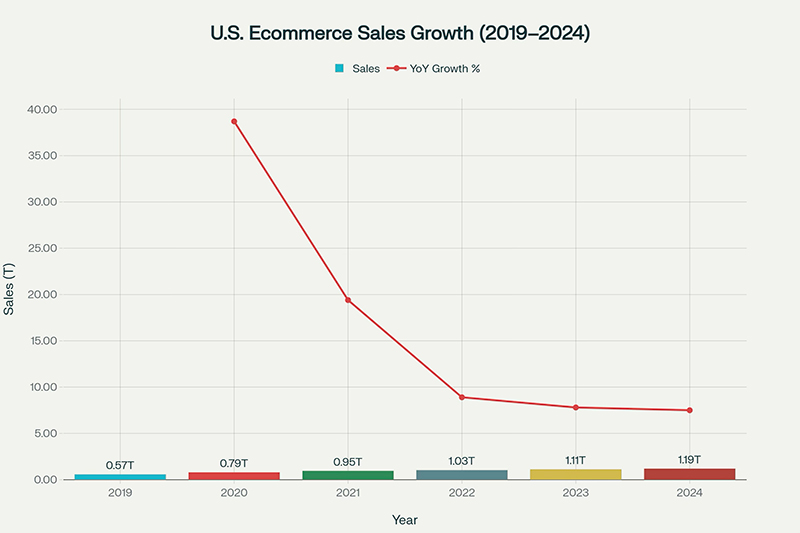
U.S. e-commerce retail sales for the last twelve months (LTM) reached approximately $1.19 trillion. For just the fourth quarter, e-commerce sales were estimated at $352.9 billion, a record high for quarterly online retail. This LTM figure represents an 8.1% increase from 2023123.
- E-commerce made up 16.1% of all U.S. retail sales for the full year 2024.
- For Q4 alone, e-commerce penetration hit even higher at 17.9–24.6% of total retail sales, depending on the reporting method.
This reflects ongoing strength in online retail—particularly during the holiday season, which accounted for over $240 billion in November and December alone—while annualized sales continued to outpace total retail sales growth by a wide margin. 412.
Why did Q4 2024 e-commerce sales hit a record high?
U.S. e-commerce sales hit a record high in Q4 2024 due to a combination of strong holiday demand, a continued shift in consumer behavior toward online shopping, and the increasing role of mobile commerce and digital marketing.
Key reasons include:
- Holiday Shopping Surge: The holiday season, particularly November and December, remains the peak period for online retail. In Q4 2024, over $240 billion in e-commerce sales occurred during the holiday season, with major milestones like Black Friday and Cyber Monday (the “Cyber 5”) accounting for more than $41 billion in just five days1.
- Mobile Shopping Boom: A growing share of holiday and Q4 sales came from smartphones—54.5% of online holiday purchases were made on mobile devices. The ease and prevalence of mobile shopping, paired with optimized user experiences, significantly boosted overall sales15.
- Persistent Consumer Shift to Online: Even after pandemic-era disruptions settled, consumers continued to favor digital channels. Q4 2024 marked the tenth consecutive quarter where e-commerce growth outpaced total U.S. retail growth, reflecting an ongoing structural shift from offline to online shopping125.
- Early and More Distributed Holiday Spending: Shoppers began purchasing earlier in the season, not just during the traditional late-December rush, with seasonal events and promotions like Amazon Prime Day and “Turkey 5” also contributing to high traffic and sales well before year-end6.
- Technological Improvements & Personalization: Broader adoption of AI-driven marketing and personalized shopping experiences helped retailers target consumers more effectively, driving higher conversion rates and repeat purchases45.
- Strong Category Performance: Sectors such as clothing, accessories, and general merchandise posted double-digit increases over 2023, fueling total growth. Building materials and garden sectors also saw a rebound, reaching their own e-commerce records2.
Quantitative data for Q4 2024:
- E-commerce sales reached $352.9 billion, up 22.1% from Q3 and 9.3% year-over-year12.
- E-commerce accounted for 17.9–24.6% of all retail sales in Q4, its highest penetration on record12.
- For the year, total U.S. e-commerce sales hit approximately $1.19 trillion25.
Summary:
The record Q4 2024 e-commerce performance was driven by robust holiday demand, pervasive mobile use, earlier and more frequent seasonal promotions, and consumers’ enduring shift toward online and mobile-first shopping—all amplified by technology and personalized marketing12456.
What About Amazon?
The pandemic caused an online shopping boon exacerbated by stimulus checks, and Amazon was one of the benefactors. In mid-2021, Amazon reported $108.5 billion in sales in the first three months, up 44 percent from the year earlier!
Amazon remains a dominant force in retail sales, especially online, and continues to outpace both Walmart and Target in revenue growth as of 2024. Here’s how they stack up, with up-to-date statistics and a comparison chart:
2024 Revenue and Growth: Amazon, Walmart, Target

Amazon’s sales soared in the pandemic and continue to grow robustly, reaching $638B in 2024, up 11% from 2023.aboutamazon+3
Walmart remains the overall largest retailer by revenue, with $642.6B in 2024.analyzify+1
Target’s sales dipped slightly in 2024 after pandemic highs, with $106.6B in revenue, a decline of 0.8% from the previous year.
Amazon’s e-commerce business has been growing at about 15 percent a year. Walmart is up 21 percent, and Target grew its online sales by 23 percent.
Revenue Comparison Chart
Annual Revenue Comparison of Amazon, Walmart, and Target for 2023 and 2024 with Growth Percentage:
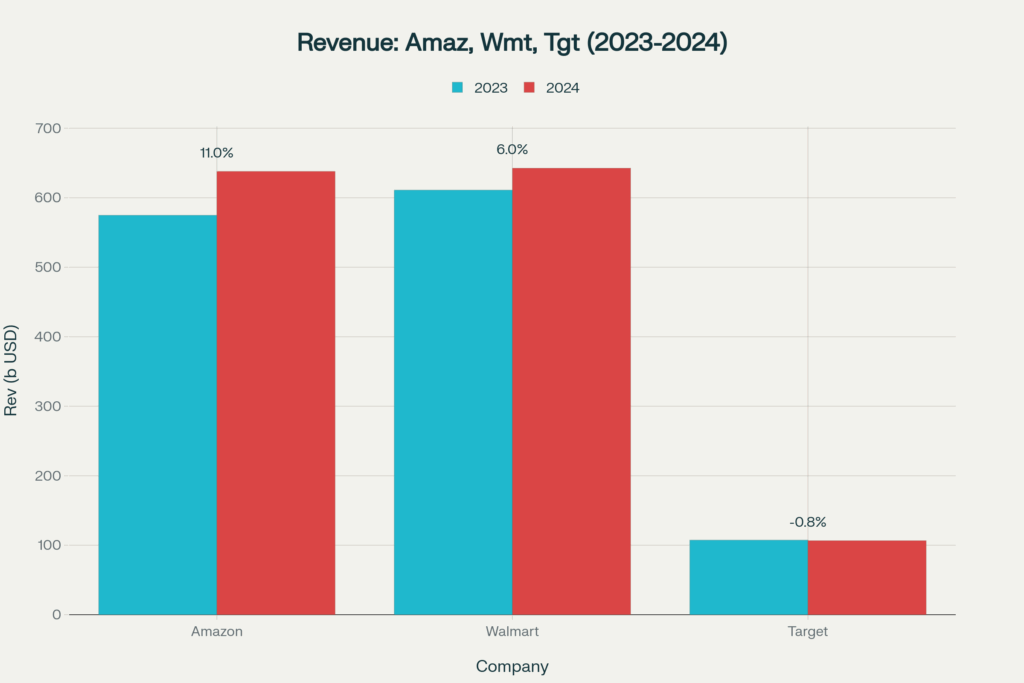
Key Insights
- Amazon’s online business leads digital growth and has, in some quarters, started to rival or exceed Walmart’s sales figures, especially in Q4 2024.forrester
- Walmart’s strength is in its massive store network but its digital surge (including e-commerce) remains a significant portion of its overall growth.analyzify+1
- Target’s growth has plateaued post-pandemic, with a slight downturn in total revenue, but it continues to perform well in categories like beauty and essentials.corporate.target+1

Like this blog post?
Are you interested in maximizing your online growth? We can help with Web Strategy, Web Design & Development, SEO, and content writing. Talk to Us! Call: (857)400-8959
Top 10 Shopping Websites Used By U.S. Shoppers for Second-Hand Product Search in 2025
- eBay
- Facebook Marketplace
- Poshmark
- Depop
- thredUP
- The RealReal
- Rebag
- Vestiaire Collective
- Swap
- Etsy (Vintage Section)
Market share estimates and ranking are based on an aggregation of industry reports and consumer usage surveys. eBay and Facebook Marketplace are the clear leaders, followed by Poshmark and Depop (especially popular for fashion), with specialized luxury and thrift platforms rounding out the top ten.
What are Shoppers Buying Online?
Online shoppers buy Beauty & Personal Care, Clothing, and Books product categories. Groceries, Cleaning Supplies, and over-the-counter medicine are purchased more frequently in brick-and-mortar stores.
Online shoppers in the U.S. are primarily buying across these categories in 2024-2025:
- Electronics:
Including smartphones, computers, wearable tech, and home gadgets—expected sales around $922 billion globally, $219 billion in the U.S., making it the top revenue category. - Fashion and Apparel:
Clothing and accessories rank second, with U.S. sales near $203 billion. It’s the most frequently purchased category online. - Food and Groceries:
Online food shopping remains very popular with convenience-focused consumers; U.S. ecommerce food sales near $125 billion, growing rapidly. - Beverages:
Craft beers, premium coffees, and other specialty drinks drive this $248 billion global segment. - DIY, Hardware, and Home Improvement:
With $220 billion in U.S. sales, more shoppers purchase tools, hardware, and home goods online. - Furniture and Home Furnishings:
Online furniture sales continue to grow, pushing $74 billion in the U.S. - Health, Beauty, and Personal Care:
Skincare, cosmetics, and supplements with revenues near $29 billion in the U.S. - Toys and Hobbies:
It is popular, especially with younger demographics and collectors. - Media (Books, Movies, Video Games):
Books and entertainment-related purchases remain a strong category online. - Luxury Goods:
High-end fashion, watches, and accessories.
Market share of leading retail e-commerce companies in the United States as of October 2024 – 2025
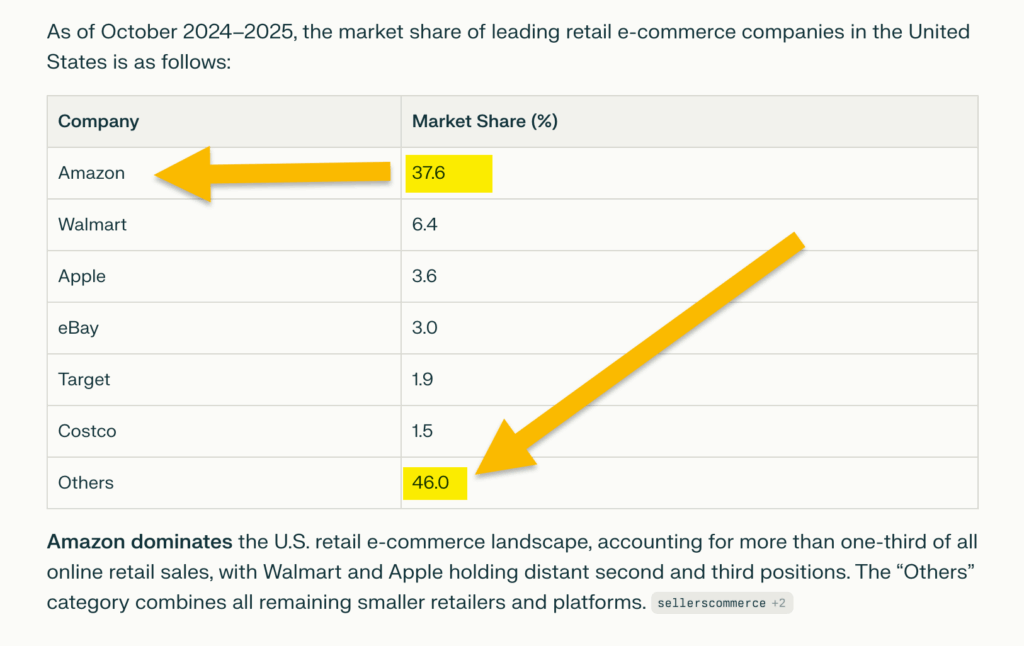

United States: retail e-commerce projected revenue for 2017-2025
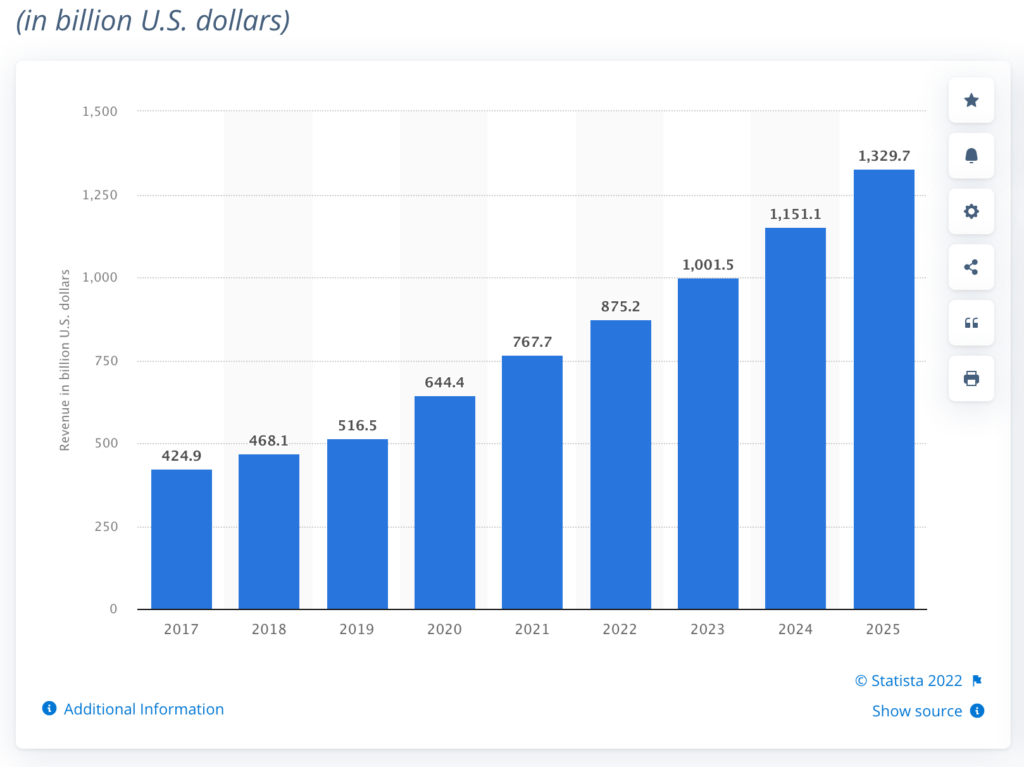

Published by Statista Research Department, Jan 3, 2022
Revenue from retail e-commerce in the United States was estimated at roughly 768 billion U.S. dollars in 2021. The Statista Digital Market Outlook forecasts that by 2025, online shopping revenue in the U.S. will exceed 1.3 trillion dollars.
Mobile commerce sales as a percentage of total retail sales in the United States from 2018 to 2025
Mobile commerce (m-commerce) has grown rapidly in the United States, now accounting for the clear majority of total retail e-commerce sales. Here are the annual percentages of mobile commerce sales as a share of total U.S. retail sales from 2018 to 2025:
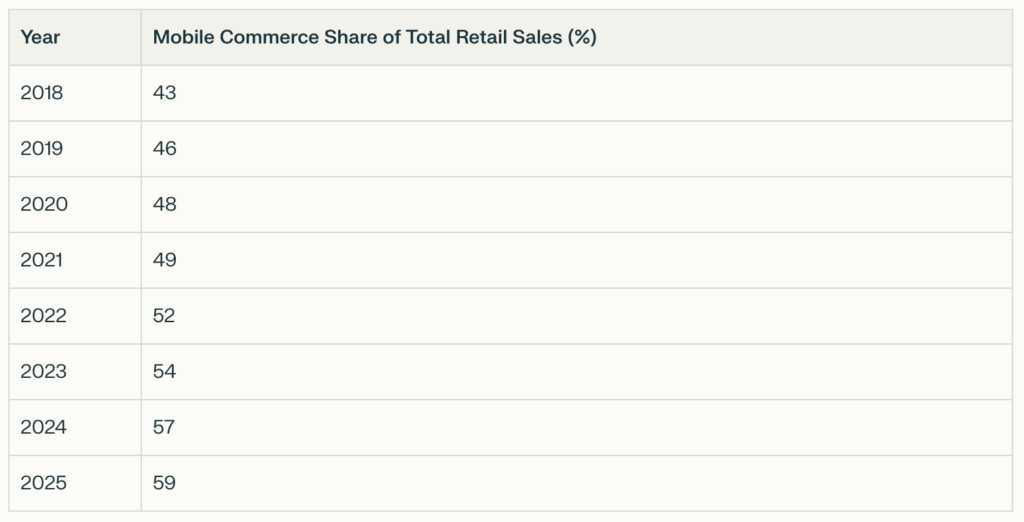

The percentage of retail sales occurring via mobile rose from 43% in 2018 to a projected 59% in 2025, illustrating the dominance of smartphones and tablets as shopping devices in the U.S. market.
The percentage of retail sales occurring via mobile rose from 43% in 2018 to a projected 59% in 2025, illustrating the dominance of smartphones and tablets as shopping devices in the U.S. market. This reflects not only a shift in consumer habits but also retailers’ improvements in mobile websites, apps, and shoppable social media.sellerscommerce+1
Mobile Commerce Sales as a Percentage of Total U.S. Retail Sales (2020-2025)
US mobile commerce sales have more than doubled since 2020, surging from about $322B to a forecasted $710B by 2025.
The highest single-year percentage growth was in 2023, with a 26.9% jump.
The trend reflects continued investment in mobile user experiences, app-based shopping, and mobile payment adoption.
US Mobile Commerce Sales and Year-Over-Year Growth, 2020-2025
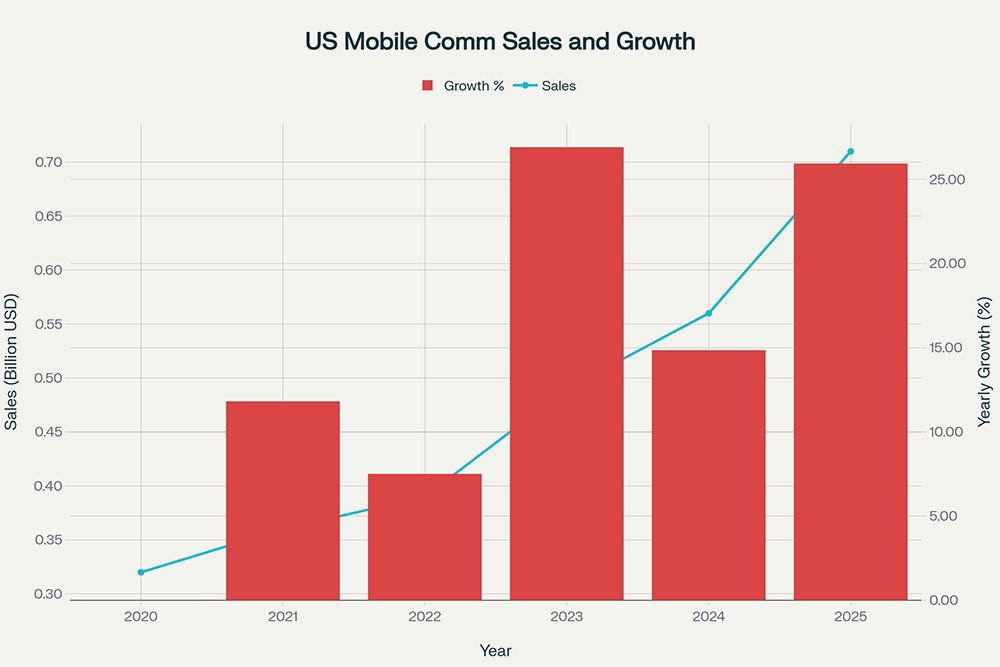

These figures show how mobile shopping has become central to US retail, carving out a share of both total e-commerce and overall retail sales. This rapid growth reflects evolving consumer habits and the rising influence of smartphones as primary shopping devices. It’s amazing seeing these numbers continue to grow.
FTI Consulting project U.S. online retail sales will surpass $2.0 trillion by 2030 (Exhibit 8), while total online market share will approach 31% by the end of the decade compared to 21% at the end of last year.
What does all this mean for you and me?
It is hard to write that everyday life is returning to normal; what is normal these days? Nothing will be the same pre-COVID-19; we shop differently now than we used to.
What is interesting is that the new shopping habits that we acquired during the pandemic are mostly sticking. Now evident since mid-2021 that the pandemic’s impact on online shopping wasn’t merely a one-time boom that will disappear with the virus.
Our clothing clients tell us that in-store visits are returning, and their online sales remain pretty strong. Shopping for clothes makes sense now since most of us are not going out, visiting venues, traveling, etc. Not to mention some of our clothes don’t fit quite right now.
As for myself, I continue to shop online, but I will visit my local small business for things I need. Supporting them is important to me.
As for business, we are a little more conscious of our expenses since many have increased. And the cost of gasoline hits home with traveling back and forth.




Like this blog post?
Are you interested in maximizing your online growth? We can help with Web Strategy, Web Design & Development, SEO, and content writing. Talk to Us! Call: (857)400-8959
What are you doing to Grow Your E-Commerce Business in this Market?


10 Tips to grow your e-commerce business and keep it humming along in the years ahead
1. Use quality images
One area of photography that is making significant gains is 360-degree product photos. Shoppers like the experience of viewing as many angles as possible. It’s also a better experience than scrolling through 8 photos on the same product.
What you can do:
- Create a slide show gallery that allows customers to see the product from different angles.
- Be sure your images are optimized for the web. Hi-Rez photos can suck up bandwidth and slow your page loads down. You do not want that, as it could tank your page rankings.
- Consider embedding a zoom or 360-degree photo feature so your customers can see more details.
- Photographing real people interacting with your products can make a sale if you can afford it. It’s better to show a watch on someone’s wrist than on a table.
2. Use customer reviews if you have them on your product or service page.
If there is one thing we have learned from Amazon, it’s the power of product reviews. Display the reviews and testimonials you have received from customers on your product pages.
Like Amazon, the more people that see reviews on a product or service are more likely to buy.
What you can do:
- Encourage buyers to leave trusted reviews on your e-commerce website.
- Display an area under your product (products & Homepage) for testimonials.
- Add a widget or section to your website for user-generated content. Nothing is more powerful than someone reviewing a product that they use regularly.
3. Allow customers to contact you.
Cover the basics by making your site as easy to navigate and the checkout process as seamless as possible. Online shoppers are more likely to purchase if they can reach support quickly.
What you can do:
- Have contact information on all pages.
- Display your phone number, email address, and store location.
- Add a frequently asked questions (FAQs) page; this helps curtail needless calls.
- Consider installing a chatbot; this opens another communication channel for your customers.
- Let customers know in advance of your response times.
4. Be consistent with your brand’s graphics.
Your brand separates you from your competition. So it goes without saying an e-commerce website should convey your brand’s values. The online shopper should see the same graphics, colors, fonts, and logos across all social media channels. The messaging should be the same.
What you can do:
- Spend time choosing your colors, fonts, and logo style.
- Match your product pages to your brand style. If your colors are light and airy, then portray that on your e-commerce website.
- Work with a website company that allows you to customize your e-commerce website pages.
LOOKING TO GROW YOUR BRAND ONLINE?
5. Optimize your product pages
What good is having a great product or service if it can’t be found? Like good navigation and imagery, optimizing each of your product pages is essential.
What you can do:
- Add keywords relevant to your product or service in the header titles.
- Use Alt Tags on all of your images.
- Place the Buy Now button in a prominent place on the page, preferably above the fold.
- Add social icons.
- Add features like save, Add to wish list, product recommendations, etc.
- Display clear pricing
6. Create an easy check-out experience.
No one likes surprises (almost no one), so if you want to eliminate shopping cart abandonment, you need to pay attention to this section.
Your check-out page needs to be simple to understand and navigate. Have clear writing on shipping fees or estimated shipping dates. Include information on what to do if they experience an issue with their order.
What you can do:
- Only ask for what is necessary to purchase a product.
- Be upfront with shipping costs.
- Spell out a clear return policy on your check-out pages.
- Provide various payment options– like PayPal, Credit Cards, Apple Pay, etc.
- Explore the use of a “one-click” check-out option if available.
7. Use of color and Graphics
I’m sure you have been on many shopping sites that incorporate nicely colored backgrounds or image blocks that make the product pop! There have been many studies on the use of color to provoke action.
What you can do:
- Use the colors of your brand
- Be aware of accessibility guidelines
- Be careful not to overdo it with colors, and be sure to use colors that complement one another
8. Use Clear, user-friendly navigation
Your goal is to provide a pleasant user experience for your shoppers. A good e-Commerce website should enable your customers to find what they need quickly.
You should include a header navigation menu, product category pages, on-site search, and product filters.
What you can do:
- Have a way back to the Home page.
- Show your main navigation menu on top of your website.
- Include a search bar and relevant filters.
- Have a Call to Action button on each website page.
- Have breadcrumbs activated on your product pages, allowing visitors to return to product categories and subcategories?
9. Keep it Clean
Want a good example? Take a look at the Apple website.
It doesn’t get any better; everything is easy to find, with fantastic imagery, graphics, and navigation.
What you can do:
- Utilize white space– just like the Apple website
- Use bullet points and short paragraphs
- Don’t clutter that product page, spread images out, and use 3 or 4 products.
- There is a study that tracks web visitors’ eye patterns. Visitors follow an E or F formation with viewing a website.
10. Make it Mobile-responsive
You know from reading this post that mobile-first is here now. You must pay attention to this area. Having your website display consistently across all devices is crucial.
What you can do:
- Provide the same shopping experience across all browsers and devices
- Be sure to align products with proper and consistent padding and spacing. Nothing is more perplexing than seeing products out of joint
- Check the page loading speed; Google ranks pages that load slowly
Not to exclude the Shopify users, you might be interested in this article, Shopify vs WooCommerce.




Grow your e-commerce business
Are you interested in maximizing your online growth and grow your e-commerce business? We can help with Web Strategy, Web Design & Development, SEO, and content writing. Talk to Us! Call: (857)400-8959
5 Trends Shaping the Future of Online Shopping that you should know
It’s crazy that your website shares the same internet space that Amazon, Walmart, and eBay do, so you might say that access to the retail playing field has leveled.
E-Commerce has changed buyer habits
From reading the statistics in this post, you know that e-commerce has changed how buyers shop and brands approach customer service.
Maryville University published an article on the future of online shopping. Pointing to the future of online shopping depends on savvy professionals who can create a personalized, engaging virtual shopping experience for consumers. I break down the main points below.
They went on to write that those entering a career in business administration must adopt the latest digital technologies and tools — such as data analytics, machine learning, and mobile trends — to meet the demands of today’s online shoppers.
Consumer Data and Analytics Improve Marketing Tactics
Business owners are experienced in market research analysis, using various tools to process customer data and uncover insights. This is helpful if you intend to grow your e-commerce business.
In the future, and even now, online shopping relies on capturing shopping behavior patterns. Again, Amazon is doing that right now. Check out an item on Amazon, and you will soon see an email in your inbox suggesting a similar product.
You probably experienced this while going through your Facebook feed, products popping up that are often purchased together, showing you an ad for a specific item you have previously viewed.
As an e-commerce website owner, you must be a strategic thinker and computer proficient. Now, there is no better time to develop and grow your e-commerce business presence. This is why you need to beef up your e-commerce website by (2025).
Personalized Online Shopping Experience: How Machine Learning Helps


Machine learning is based on algorithms that can learn from data without relying on rules-based programming. The massive volume and complexity of big data that the world is immersed in have increased the potential of machine learning and the need for it.
So it is—shoppers require a more personalized experience in the world of e-commerce. Accordingly, consumers are more likely to shop for brands that recommend products based on their previous shopping experience. Think Amazon, including relevant offers.
User profiles
Analysts use these profiles and insights (with the help of AI) to deliver personalized recommendations and relevant content based on an intelligent algorithm.
So it’s no surprise when online stores personalize the shopping experience, they can experience a jump in sales conversion rates of 15% to 20%, according to McKinsey.
Customer information is being replaced by manual analysis. Data analysts now use artificial intelligence (AI) and machine learning technologies to compile data and create customer profiles.
A report from Liveclicker, the digital marketing solutions provider, found that businesses investing in smart personalization in e-commerce can expect up to a 20-fold return for every marketing dollar they spend.
Looking to grow your e-commerce business?
This is why you need to beef up your e-commerce website by (2025)
Mobile Shopping
According to Statista data, online purchases made with smartphones account for more than $345 billion in retail sales.
Your e-commerce website needs to be mobile-friendly for one big reason. According to Statista, retail buying through mobile devices accounts for almost 54% of online orders, so smart companies are creating a mobile-friendly e-commerce experience.
A business’s e-commerce store should be accessible by computer and optimized with a design or application that makes it easy to browse and buy from a smartphone, tablet, or other mobile device. This is one way to grow your e-commerce business!
Automated Commerce and Voice Technology
A report from Coupon Follow, the retail coupon code tracker, found that nearly half of millennials have used voice technology to buy items online. For example, someone might add an item to their online shopping cart by calling out to Alexa or Amazon Echo.


While not everyone uses smart speakers to order online, a sizeable number of these device owners do. Adobe Digital Insights report found that 32% of smart speaker owners use their devices to compare product prices. This can have a big influence on consumers’ purchasing decisions.
47% use smart speakers for product search and research, and about 43% create shopping lists using voice commands.
A new statistic on voice-enabled shopping in the U.S. shows significant growth since the $40 billion market size projection for 2022 by OC&C Strategy Consultants:
- The U.S. voice commerce market revenue was approximately $15 billion in 2024 and is expected to grow rapidly to reach around $50 billion by 2030, with a compound annual growth rate (CAGR) of about 24.5% between 2025 and 2030.grandviewresearch
- Globally, the voice commerce market is projected to expand from about $117 billion in 2024 to $150 billion in 2025, with growth driven by voice assistants like Alexa, Siri, and Google Assistant.thebusinessresearchcompany+1
- Some forecasts show the voice commerce market expanding further to more than $700 billion by 2034, reflecting wide adoption of voice-based shopping across devices like smart speakers, wearables, and smartphones.dimensionmarketresearch+1
- In terms of devices, smart speakers accounted for nearly half of the U.S. market revenue in 2024, with wearables being the fastest-growing segment.scoop.market+1
This data highlights the rapid expansion of voice commerce as a preferred and convenient shopping method, driven by advances in AI and consumer adoption of voice-enabled technology.
Social Media Platforms and Direct Sales
More and more businesses realize that social media platforms are effective places to make direct sales. Billions of people use social media platforms daily, so it makes sense to utilize them. It’s a must if you hope to grow your e-commerce business!
According to Sprout Social’s 2024 Social Media Content Strategy Report, 61% of social users turn to Instagram to find products for their next purchase.
Many online shoppers look to Pinterest, Facebook, and others for ideas about what to buy.
According to Deloitte research, 71% of shoppers say AR technology encourages them to buy. The ability to test or try out products builds confidence in a purchase.
Augmented reality (AR) is an enhanced version of the real physical world achieved through the use of digital visual elements, sound, or other sensory stimuli delivered via technology. It’s pretty mind-blowing where all this e-commerce business is headed.
Winding down
Knowing how to create an engaging e-commerce web experience and adapt to the latest digital technologies and tools, such as data analytics, machine learning, and mobile trends, will ensure you a place in the fast-moving world of e-commerce. And help grow your e-commerce business at the same time.
And who knows, maybe you’ll compete with Amazon down the road. Like in a long road, a real long highway kind of road.
Tell me what you think of this article, and what your planning for 2023 and beyond.


Author Bio: Mark Medeiros is a “jack of all trades” and the founder of Slocum Studio. He loves photography, nature, and kayaking on the river. Mark enjoys blogging, online marketing, and his clients. Who’s doing this write-up anyway:)
Subscribe to our newsletter!


We hope that you enjoy our content. If you decide to make a purchase after clicking on one of our affiliate links, we’ll earn a small commission at no extra cost to you. Thanks for reading! View our Affiliate Disclosure


This article is to say about future e-commerce. If businessmen read this article they know about many information about future eCommerce and they can apply all tips to their eCommerce business. thank you so much write for us.
With ecommerce continuing to grow over time, it’s important to have a website that’s built for this purpose. Thanks for sharing this info!
Thanks for sharing this information.
Loved your piece on progressive web apps! Could you also discuss the limitations or challenges developers might face when adopting this technology
Great content and very well explained.
Looking forward to more posts like this!